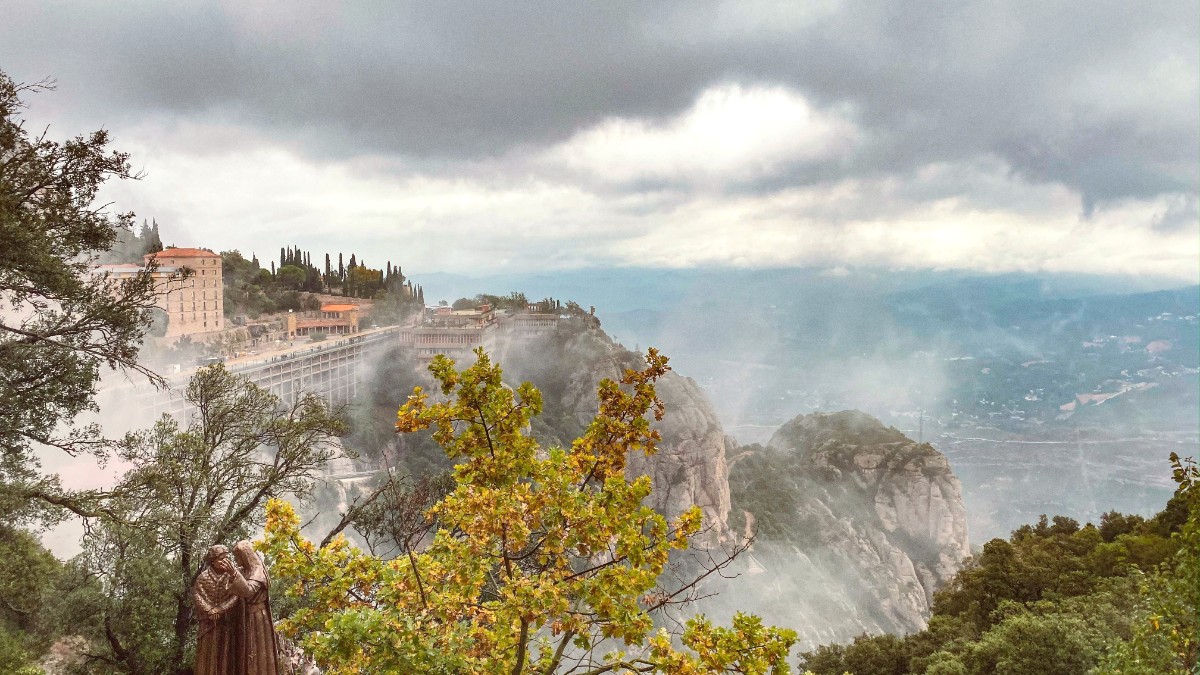
The island’s nickname, "The Emerald Isle," comes from its resemblance to Ireland's green hills and its history of Irish settlement. You find this influence in the local culture and the welcoming nature of the Montserratian people. This combination of Caribbean warmth and a subtle Irish charm creates a travel experience that feels both familiar and new.
Montserrat is where nature's power meets human spirit. Its story of rebuilding from volcanic impact shapes an unique identity. This island delivers a profound journey into adaptation and beauty.
The culture and warm community here are a testament to their enduring strength. Visitors witness a dynamic environment and a people committed to their heritage and future.
Montserrat is a volcanic island forming part of the Lesser Antilles, a chain of islands that arcs through the eastern Caribbean Sea. This location places it within the Leeward Islands group, southeast of Puerto Rico and west of Antigua, making it accessible from other regional hubs. The island measures approximately 16 kilometers (10 miles) in length and 11 kilometers (7 miles) in width, encompassing a total area of about 102 square kilometers (39 square miles). Its relatively small size means that the island feels manageable for exploration, with visitors able to experience different facets of its geography within a short travel time.
The landscape is distinctly mountainous, dominated by the Soufrière Hills volcano in the south. This volcano has significantly altered the island's geography since its eruption sequence began in 1995. The ongoing volcanic activity has reshaped much of the southern part of the island, creating a designated exclusion zone. This zone, which covers a substantial portion of the southern landmass, prevents public access due to safety concerns. The visible impact of the volcano includes vast pyroclastic flow deposits, choked valleys, and the abandoned capital city, Plymouth, now buried under volcanic ash and mud. This dramatic geological feature defines the island’s southern aspect, a stark reminder of natural power.
Protected forest, home to endemic wildlife.
Unique dark sands contrasting turquoise waters.
Ravines carrying rainwater to the coast, creating channels and waterfalls.
Main port and developing commercial center.
North of the exclusion zone, the landscape transforms into lush, green hillsides, dense rainforests, and fertile valleys. The Centre Hills, located centrally, represent a protected forest area, providing a habitat for endemic wildlife and offering various hiking opportunities. The island’s coastline features a mix of rugged cliffs and numerous bays, many with black sand beaches formed from volcanic rock. These unique dark sands create a striking contrast against the clear turquoise waters of the Caribbean Sea. Little Bay, situated on the northwest coast, serves as the island’s main port and developing commercial center. It also acts as the gateway for ferry arrivals and hosts various amenities.
Discover the island's accessible northern areas, where lush landscapes invite exploration and community life flourishes.
The southern zone remains an active volcanic area, largely inaccessible to the public. View its dramatic effects from safe, designated locations.
Montserrat’s dynamic landscape, shaped by its volcano and verdant hills, presents an unique Caribbean experience.
Montserrat's history is a compelling narrative of colonization, resilience, and the profound impact of natural disaster. Christopher Columbus first sighted the island in 1493, naming it Santa María de Montserrate after a monastery in Spain. However, permanent European settlement did not occur until 1632, when Irish Catholic settlers arrived from nearby St. Kitts. They sought refuge from religious persecution, establishing an unique Irish influence that remains a part of Montserrat's identity, earning it the enduring nickname "The Emerald Isle of the Caribbean." This Irish heritage is celebrated annually during the island’s distinctive St. Patrick's Day Festival.
The island’s economy historically relied on sugar cane cultivation, a labor-intensive industry powered by enslaved African people. This system shaped Montserrat's social structure and demographics for centuries. The forced labor of enslaved individuals created much of the island’s wealth for its colonial masters, and their descendants form a significant part of today's Montserratian population. The contributions of these enslaved people are a deeply ingrained part of the island’s legacy, influencing its culture, music, and cuisine.
Named Santa María de Montserrate, marking its European discovery.
Irish Catholics from St. Kitts settle, fleeing persecution and bringing a lasting cultural influence.
Great Britain secures definitive control, shaping governance and legal systems.
The ongoing eruption of the Soufrière Hills volcano, starting in 1995, profoundly reshaped the island. The former capital, Plymouth, once a bustling port city, became inundated with pyroclastic flows and mudslides, leading to its complete abandonment and burial.
Montserrat a distinct Caribbean experience, blending its Irish heritage with the dynamic presence of its active volcano. Here is a brief overview of the island's characteristics:
Functions as the de facto interim capital, hosting government offices and commercial businesses in the north.
The official language. This enables clear communication for visitors from English-speaking countries.
Eastern Caribbean Dollar, fixed at 1 USD = 2.70 XCD; USD widely accepted.
A growing, niche industry attracting visitors to the unique volcanic landscape.
Continues on a limited scale in the accessible areas.
Significant contributions to the local economy from Montserratians abroad.